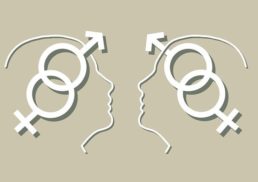What if we told you that mastering the art of effective communication could unlock numerous doors in both your personal and professional life? It’s true! Learning to communicate effectively is the cornerstone of thriving relationships, workplace success, and personal growth. This comprehensive guide will help you navigate the complexities of communication, offering tips and strategies to help you become an expert communicator. Let’s begin!
Table of Contents
Key Takeaways
Effective communication is essential for successful relationships and requires verbal/nonverbal cues, active listening, empathy & understanding.
Overcome common barriers by managing stress, being culturally sensitive & dealing with distractions.
Strengthen relationships through eye contact, curiosity & integrity while tailoring strategies to different contexts.
The Importance of Effective Communication

Effective communication is the lifeblood of personal and professional success, as it fosters strong relationships, enhances teamwork, and improves productivity, especially in the context of workplace communication. It offers numerous benefits, such as reducing miscommunication, boosting team morale, and promoting trust – all of which are essential for healthy communication in the workplace.
Effective communication demands:
Patience
Appropriate choice of medium based on the topic
Exchange of feedback
Use of suitable communication tools such as team communication apps
Poor communication can lead to financial losses and decreased employee loyalty, both for the individual and the organization.
Essential Components of Effective Communication
Understanding the critical components of communication: verbal and nonverbal cues, active listening, and empathy and understanding, is fundamental to excel in it. These elements work in harmony to create meaningful interactions, allowing us to convey our thoughts and emotions effectively.
Each of these components warrants a detailed examination.
Verbal Cues
Clear and concise language is crucial for successful communication. Effective verbal cues can range from using transition words to signify a change in topic, to asking open-ended questions or requesting clarification. The tone of voice also plays a significant role in communication, as it helps convey the intended message and influences how it is perceived and accepted by others.
Enhancing verbal communication involves thoughtful speaking, concise language usage, audience awareness, tone and body language management, and active listening to verify comprehension.
Nonverbal Cues
Nonverbal cues, such as body language, facial expressions, and tone of voice, play a vital role in conveying messages. Effective communicators are skilled in using these cues to express their messages clearly and accurately. Inconsistent body language can conflict with verbal communication, making the listener feel that the speaker is untrustworthy.
Effective conveyance and interpretation of nonverbal language require an understanding of cultural norms and expectations, coupled with adjustment of nonverbal signals as per context.
Active Listening
Active listening involves carefully listening to what is being said and asking questions for further clarification. It is crucial for effective communication, as it enables comprehension and engagement with the speaker. The three A’s of active listening – Attention, Attitude, and Adjustment – are key to understanding and connecting with others.
Practicing active listening fosters human connections and builds bridges between individuals, transcending differences related to region, race, religion, or sexuality.
Empathy and Understanding
Empathy and understanding refer to the ability to discern and appreciate diverse communication styles and viewpoints. By acknowledging and valuing different communication styles and perspectives, we can enhance communication through increased comprehension and empathy.
Developing assertiveness is also crucial for effective communication. By starting in low-stakes situations and seeking help from acquaintances or relatives, we can build our assertiveness skills and become more effective communicators.
Overcoming Common Communication Barriers

Effective communication is not without its challenges. Common barriers, such as stress, difficulty concentrating, and inconsistent nonverbal communication, can hinder our ability to communicate effectively. To overcome these obstacles, we must address our stress levels, be culturally sensitive, and deal with distractions.
A focused examination of these barriers’ solutions is due.
Stress Management
Managing stress and staying calm under pressure is essential for clear communication. Stress can lead to misinterpretation of others, unclear or off-putting nonverbal signals, and impulsive behavior patterns.
Effective communication stress management techniques may include:
Using sensory input
Incorporating humor
Finding compromises
Taking breaks from the situation
These techniques can help alleviate stress, allowing for more effective and genuine communication.
Cultural Sensitivity
Being aware of and respecting cultural differences can prevent misunderstandings and contribute to effective communication. Addressing cultural barriers, such as stereotypes and status-based self-importance, among team members is an effective approach to enhance team communication.
Implementing cross-cultural training and educating oneself about nonverbal norms of teammates’ cultures can also help prevent misinterpretations and enhance communication efficacy.
Dealing with Distractions
Minimizing distractions and maintaining focus can enhance communication. Here are some strategies to manage distractions during a conversation:
Seat yourself away from distractions
Recognize and reduce distractors
Moderate background noise and interruptions
Employ active listening techniques
Take pauses during extended conversations
By implementing these strategies, you can effectively communicate and improve your communication skills, reducing the chances of miscommunication and misunderstandings.
By reducing distractions and sustaining focus, we can improve communication effectiveness and minimize misunderstandings.
Enhancing Workplace Communication

Effective workplace communication is critical for cultivating employee engagement, teamwork, productivity, and a healthy organizational culture. Encouraging open dialogue, utilizing technology, and providing training and support are all essential strategies for improving workplace communication.
A detailed examination of these strategies is in order.
Encouraging Open Dialogue
Promoting a culture of open communication can improve workplace communication by encouraging collaboration and establishing trust. By fostering an environment where employees feel comfortable sharing their thoughts, ideas, and concerns, we can enhance teamwork, problem-solving, and overall productivity.
Creating regular opportunities for team meetings and one-on-one discussions can further facilitate open dialogue and improve communication within the workplace.
Utilizing Technology
Employing communication tools and platforms effectively can facilitate communication processes, ensuring that teams are communicating effectively. Utilizing communication channels, like:
team communication apps
project management software
video conferencing platforms
email
instant messaging
in the workplace can assist in expediting communication processes, making them more rapid, effective, and convenient.
Embracing technology, such as a team communication app, can streamline communication, ensuring efficient and effective information sharing among team members.
Providing Training and Support
Offering regular training sessions is essential for fostering and sustaining effective communication skills in the workplace. Providing training and support for employees in areas such as active listening, empathy, and assertiveness can help them develop the necessary skills to communicate effectively.
It is recommended that communication training sessions be held at least annually, however, depending on the complexity of the communication skills being taught and the specific needs of the employees, a more frequent schedule may be necessary.
Developing Personal Communication Skills
To improve personal communication, it’s essential to build confidence, practice active listening, and adapt to different communication styles. By honing these skills, we can become more effective communicators and enhance our interactions with others.
A deeper examination of these skills is necessary.
Building Confidence
Developing self-assurance in communication is essential to ensure that messages are expressed effectively and sincerely. Techniques that may be employed to bolster self-assurance when engaging in communication include:
Rehearsing and repetition
Exhibiting confident body language
Preparing and rehearsing
Articulating oneself clearly
Employing assertiveness
Captivating the audience
Building communication confidence can enhance the quality of personal and professional relationships through the use of positive body language.
Practicing Active Listening
Active listening involves the following steps:
Face the speaker
Maintain eye contact
Attend to non-verbal cues
Refrain from interrupting
Listen without prejudice
By practicing active listening, we can gain insight into the thoughts, ideas, and emotions of others, allowing us to better understand and connect with them.
Refining active listening skills can contribute to stronger relationships and improved communication effectiveness.
Adapting to Different Communication Styles
Recognizing and adjusting to various communication styles is essential for more effective interactions. By being flexible and adapting our communication style, we can ensure that our message is comprehended and accepted by a diverse range of individuals. This adaptability allows us to establish strong relationships and achieve our desired outcomes.
Some key factors to consider when adapting communication styles include understanding the audience, clarifying objectives, being mindful of context, and utilizing appropriate language and tone.
The Role of Feedback in Effective Communication
Giving and receiving constructive feedback is essential for growth and improvement in both personal and professional settings. By embracing feedback, we can learn from our mistakes and refine our communication techniques.
The importance of feedback in effective communication and constructive methods for giving and receiving feedback warrant a discussion.
Giving Constructive Feedback
Providing specific, actionable feedback is essential to help others improve their communication skills. Here are some tips for giving constructive feedback:
Focus on particular areas for improvement.
Offer suggestions for development.
Be specific and provide examples.
Use a positive and supportive tone.
Be respectful and considerate of the person’s feelings.
Remember, constructive feedback is meant to help and support others in their growth and development.
Offering constructive feedback can foster a positive work environment and stimulate continuous learning and growth among team members.
Receiving and Implementing Feedback
Accepting feedback graciously and using it to enhance communication skills is crucial for personal and professional growth. By embracing feedback, we can gain various perspectives and insights, allowing us to adjust our future messages to better serve our intended audience. Some steps to effectively implement feedback in communication include:
Focusing on the behavior, not the individual
Ensuring the content of the feedback is balanced
Being particular in your feedback
Setting realistic expectations
Offering ongoing support to the recipient of the feedback
The Impact of Emotional Intelligence on Communication
Developing emotional intelligence can enhance empathy, comprehension, and overall communication efficacy. Emotional intelligence involves understanding, managing, and regulating one’s own emotions, as well as identifying and responding to the emotions of others. By cultivating emotional intelligence, we can better connect with others, maintain healthy relationships, and communicate effectively in various situations.
Some components of emotional intelligence that are beneficial for communication skills include self-awareness, self-regulation, social awareness, and empathy.
Creating a Positive Communication Environment
A supportive and inclusive environment encourages open and effective communication. By creating a positive communication environment, we can facilitate understanding, trust, and collaboration among team members. Some measures to foster a positive communication environment in the workplace include:
Prioritizing onboarding and training
Facilitating employees in finding a comfortable work environment
Holding regular check-ins
Promoting team collaboration
Acknowledging and appreciating employees
Being explicit and respectful in communication.
Tailoring Communication Strategies for Different Situations
Effective communication requires the adaptation of methods and styles to suit different contexts and audiences. By being flexible and adjusting our communication style, we can ensure that our message is comprehended and accepted by diverse individuals. Some key factors to consider when adapting communication styles include:
Understanding the audience
Clarifying objectives
Being mindful of context
Utilizing appropriate language and tone
Maintaining and Strengthening Relationships through Effective Communication
Consistent practice of effective communication is key to establishing and sustaining robust personal and professional relationships. By honing our communication skills, we can:
Improve our understanding of others
Resolve conflicts
Build trust
Enhance overall relationship satisfaction
Some strategies for maintaining relationships through effective communication include:
Keeping comfortable eye contact
Listening with curiosity
Acting with integrity
Communicating your needs to your partner in a respectful manner
Learn more, visit The art of effective communication—how to lead with confidence.
Summary
In conclusion, mastering the art of effective communication is essential for personal growth, professional success, and building strong relationships. By honing our verbal and nonverbal cues, practicing active listening, developing empathy and understanding, and adapting to different communication styles, we can become more effective communicators and enhance our interactions with others. Remember, the journey to becoming an expert communicator is a continuous process, and with practice and dedication, the rewards are boundless.
Frequently Asked Questions
What is communicating effectively?
Effective communication involves clearly transmitting a message and receiving acknowledgment that it has been received and understood, as well as providing acknowledgment to ensure the other party feels heard. It also requires understanding the emotions being conveyed when listening, and exchanging ideas, thoughts, opinions, knowledge, and data so that everyone is satisfied with the message.
What are 3 skills for effective communication?
Effective communication requires three essential elements: listening actively, being clear and concise in your speech, and maintaining open-mindedness and respect for the opinions of others.
Why is communication important?
Communication is essential in our daily life, allowing us to build relationships and connect to others. It enables us to express our feelings, share information and pass on messages effectively, reducing the potential for conflict and misunderstandings.
What are the key components of effective communication?
Effective communication requires verbal and nonverbal cues, active listening, and empathy and understanding for successful interaction.
How can I improve my verbal communication skills?
Practice active listening, think before you speak, pay attention to your tone and body language, use concise language, and be mindful of your audience to improve your verbal communication skills.










